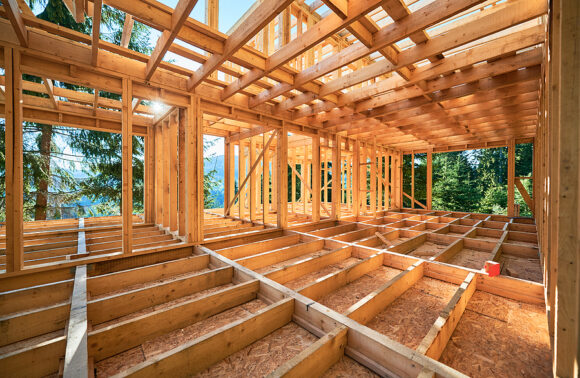Over the past decade, there’s been a dramatic increase in reconstruction costs, according to Trish Hopkinson, head of 360Value at Verisk.
The 10-year analysis examined residential and commercial reconstruction costs between October 2014 and October 2024.
National residential reconstruction costs, including materials and retail labor, increased 63.7 percent in the past ten years.
Between October 2014 and October 2019, average residential reconstruction costs increased by 19.8 percent nationally and ranged between 12.6 – 26.9 percent at a state level with Washington, Nevada, Idaho, Oregon and Kentucky showing the largest increases.
Residential reconstruction costs continued to rise throughout the next five-year period (Oct. 2019 – Oct. 2024), averaging 43. percent growth nationally and between 34 – 44.9 percent at a state level. During this period, Rhode Island, New Hampshire, Montana, Utah and Idaho showed the highest cost increase.
Annual average residential reconstruction costs increased to 4 percent from Oct. 2014 to Oct. 2019, then jumped to 7.3 percent the following five-year period at a national level.
National commercial reconstruction costs mirrored residential costs, with an average increase of 58.4 percent since Oct. 2014.
From Oct. 2014 to Oct. 2019, data showed average commercial reconstruction costs increased by 16.6 percent nationally and ranged between 11.6 – 25.0 percent at a state level with Washington, Nevada, Oregon, Idaho and Minnesota showing the largest state cost impact.
This trend continued from Oct. 2019 to Oct. 2024, with commercial reconstruction costs averaging 41.8 percent growth nationally and between 28.7-45.5 percent at a state level. During this period, Rhode Island, Florida, New Hampshire, Utah and New Mexico showed the highest cost increase.
Nationally, annual average commercial reconstruction costs increased to 3.3 percent from Oct. 2014 to Oct. 2019 then more than doubled to 7.2 percent in Oct. 2019 to Oct. 2024.
National commercial and residential lumber costs showed an average increase of 43.8 percent since Oct. 2014.
National average lumber costs increased approximately 10x from 3.9 percent in the first five-year period to 39.9 percent in the following five-year period, Verisk found.
States such as Utah, Hawaii, Washington, Montana and New Mexico were impacted the most over the past five years – with Montana, Washington and Utah costs rising by more than 50 percent. Meanwhile, Iowa, Indiana, Pennsylvania, Kansas and Alaska reported the lowest increase during the same time period.
“Over the past 10 years, we have seen a dramatic increase in reconstruction costs. In particular, the pandemic had a significant effect on building costs, reporting just over a 25 percent average increase for both commercial (24.3 percent) and residential (25.9 percent) costs from March 2020 through May 2023. This trend slowed after the pandemic but the impacts of inflation, labor market strains and supply chain delays still lingered – between April 2023 to October 2024 both commercial (12.4 percent) and residential costs (10.7 percent) continued to grow, averaging an 11.5 percent increase,” explained Trish Hopkinson, head of 360Value at Verisk. “Rising reconstruction costs as such can make it more expensive for insurers to pay claims for property damage and increase policy premiums.”
According to Verisk’s Market Expectations Index, the industry can anticipate closer to pre-pandemic growth rates to continue from January 2025 to July 2025 – by about 2 percent for residential and 2.2 percent for commercial.
Topics
Trends
Interested in Trends?
Get automatic alerts for this topic.
